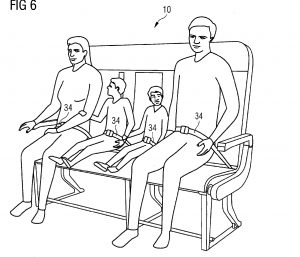Airline seats are notorious for their ability to make us feel confined and constrained, not to mention uncomfortable. Seats are narrow and there’s not a lot of space between them, so plane rides aren’t always very comfortable.
 In the 1960s, when seat dimensions were first prescribed by the Federal Aviation Administration, the seat width was 17 inches and the weight of the average customer was estimated to be 140 for females and 166 for males.
In the 1960s, when seat dimensions were first prescribed by the Federal Aviation Administration, the seat width was 17 inches and the weight of the average customer was estimated to be 140 for females and 166 for males.
Today, the average seat width is 16.5 inches, while the average weights have increased by 25 and 30 pounds respectively. These incremental changes have functioned on the premise that “one size fits all.” Clearly, this is no longer the case for a growing number of passengers, and airlines are being forced into uncomfortable situations with overweight customers, seemingly without a viable remedy.
One airline manufacturer is taking measures to radically change its seating.
Airbus has filed a patent for an airline bench, an adjustable form of seating that takes advantage of reconfigurable, detachable seatbelts, which can create customizable accommodations for larger fliers as well as children.
Air New Zealand has seating designed to address this issue: it’s called the Skycouch. Individuals, couples, or families can purchase a row of three seats that converts into a couch of sorts when the adjustable foot rests are fully elevated and the armrests are lifted. The length of the Skycouch is listed in a promotional video as 5 foot 1 inch, and is available only on its long-haul flights.
No word on when the proposed airline bench could show up in airplanes, but it could be a welcome alternative for those who currently dread the hours spent in cramped quarters.
What do you think? Would you prefer a seat, or riding on an airline bench? Does it make a difference if it’s a family member or stranger sitting next to you? What do you think airlines should do to make their passengers more comfortable?
Leave your suggestions and ideas in the comments below, on our Facebook page, or in our Twitter stream.
Photo credit: Airbus US Patent Application
